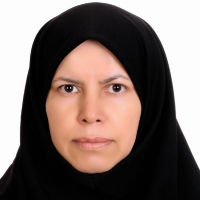Effective Biological Control of Carnation Fusarium Wilt Using a New Combination of Trichoderma Mutant Isolates
Fusarium infection in carnation is the most important limiting factor for carnation production. We isolated 38 fungal isolates from infected carnation plants collected from Mahallat, Iran, and 15 Fusarium species were identified morphologically. Isolates of J14, k5, and k72 were the most pathogenic isolates in pathogenicity test on White Liberty cultivar. Molecular identification of J14, k5, and k72 isolates was done based on Elongation Factor 1-alpha (EF1-α) gene. To investigate the effect of Trichoderma and some of its mutants on reducing the Fusarium infection, six wild type isolates were examined. The species of T. harzianum, T. virense, and T. ghanens showed more inhabitation potential and were chosen for induced mutation via gamma irradiation at 250 Gy. The number of 270 mutants were screened morphologically and 60 mutants were screened using dual culture against J14, k5, and k72. Morphological and molecular identification of J14, k5, and k72 isolates recognized them as F. oxysporum. Three mutants, i.e. ThM7(67.17%), TgM1 (59.45%), and TvM17(57.55%) showed the highest efficacy and were selected. Evaluation test of efficacy in greenhouse by mixture of T. harzianum, T. virense and T. ghanens (TW) and mixture of mutant isolates ThM7, TgM1, and TvM17 (TM) showed that biological method had higher ability to control Fusarium infection on carnation plants in greenhouse condition, and mutation had no adverse effects on plants. The results of this experiment proved that the use of mutation in the Trichoderma genome with the use of gamma radiation could be an effective way to achieve isolates with better performance in this bio-control agent.
-
Introduction of an in vitro Pathogenicity Test of Ascochyta rabiei on Chickpea Leaves Detached from Resistant and Susceptible Cultivars
Fariba Ramezani Khozestani, *, Farhad Shokouhifar, Mojtaba Mamarabadi
Iranian Journal of Pulses Reseach, -
Optimization of regeneration of anise (Pimpinella anisum L) in in vitro condition
Wajihe Sadat Hoseinzadeh, *, Leila Samiei
Iranian Journal of Rangelands Forests Plant Breeding and Genetic Research,


